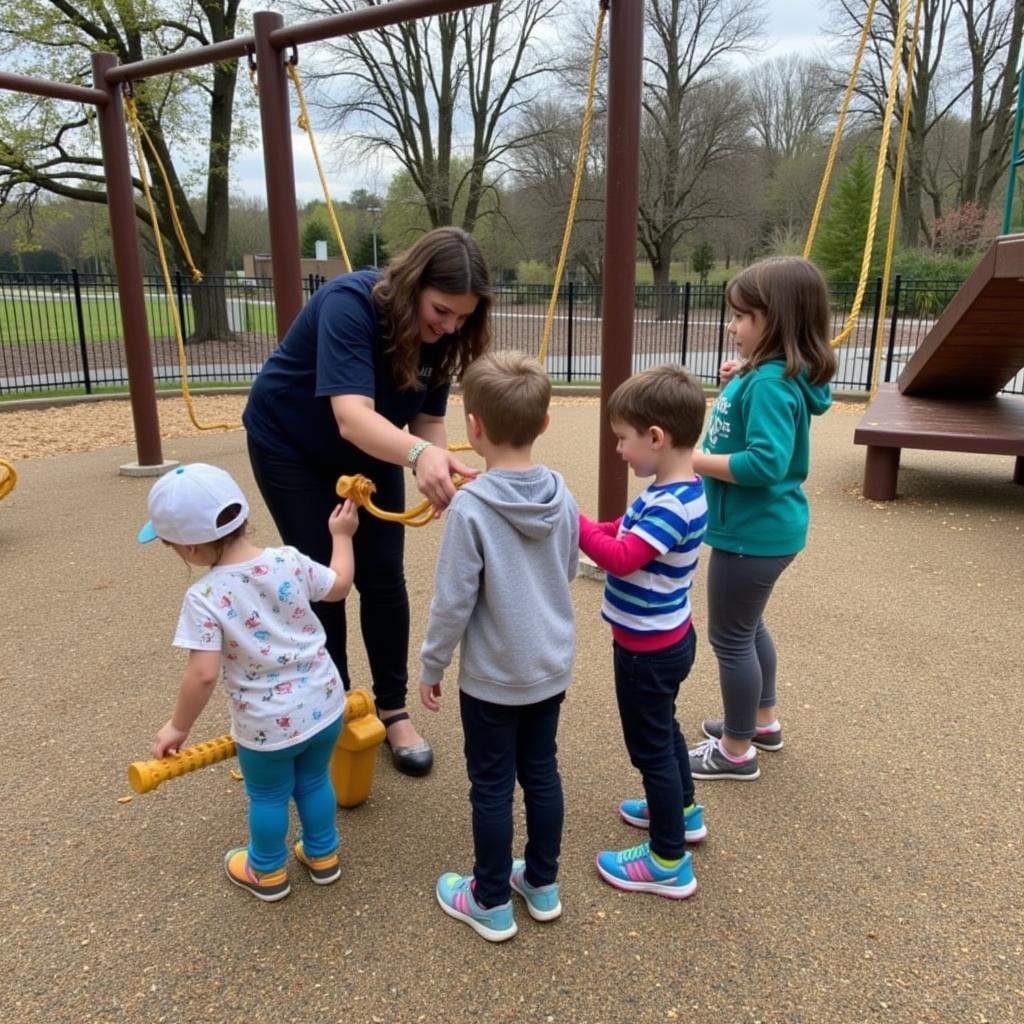“Children rely on their parents, the elderly rely on their children.” Ensuring the safety of children, especially preschoolers, is always a top concern for families and society. At this stage, children are like newly sprouted buds, needing careful care and protection. So how can we create an absolutely safe environment for young children? Let’s explore the “preschool safety principles” in this article.
Similar to Alaska Preschool, ensuring children’s safety needs to be emphasized.
Safe Environment – The Foundation for Development
A safe environment is the foundation for the comprehensive development of children. This includes both physical and mental safety. Ms. Nguyen Thi Lan, a preschool education expert with over 20 years of experience, emphasized in her book “Raising Safe Children”: “A safe environment is a prerequisite for the healthy and happy development of children.” So specifically, what does a safe environment for preschoolers need?
Physical Facility Safety
Safe physical facilities are a top priority. Playgrounds, classrooms, toys… need to be designed and inspected regularly to eliminate potential hazards. Imagine if stairs didn’t have handrails, table corners were sharp, or toys had small parts that could be easily swallowed – the consequences would be unpredictable! Regular inspection of equipment such as molded plastic preschool tables is also essential.
 Preschool playground safety inspection
Preschool playground safety inspection
Safety in Daily Activities
Safety in daily activities is equally important. From eating and sleeping to personal hygiene, everything needs to be supervised and guided carefully. Mr. Pham Van Hung, principal of Hoa Sen Kindergarten, shared: “Every activity, even the smallest, needs to consider the safety factor.”
The story goes that a child in kindergarten, out of curiosity, put a longan seed in their nose. Fortunately, the teacher discovered it in time and took the child to the hospital. This story is a lesson about the necessity of supervising children in all activities. To learn more about making stone benches with popsicle sticks for preschool, you can refer to additional resources.
Teaching Children Self-Protection Skills
Besides creating a safe environment, equipping children with self-protection skills is also extremely important. “Better safe than sorry” – as the saying goes. Teaching children basic skills such as not interacting with strangers, not accepting things from strangers, and knowing how to call for help in danger will help children protect themselves in unexpected situations.
Education Through Play and Stories
Children learn best through play and stories. Integrate safety lessons into play activities, and tell children stories about self-protection. For example, the story “The Starfruit Tree” reminds us about greed and vigilance towards strangers. Planning the preschool academic year tasks should also include teaching children self-protection skills.
Regular Practice
Regular practice will help children remember and react faster when encountering dangerous situations. Organize drills and role-playing games for children to practice the skills they have learned. Ms. Le Thi Hoa, lecturer at the Central College of Pedagogy, believes: “Regular practice is the key to forming self-protection skills for children.” For those interested in lyrics of Anh Dao preschool song, this content will be helpful.
Conclusion
“Raising healthy children, teaching them to be good” is the wish of all parents. Ensuring the safety of preschoolers is an important task that requires the joint efforts of families, schools, and society as a whole. Let’s join hands to build a safe and happy environment for children! What experiences do you have in ensuring the safety of your children? Please share with us by leaving a comment below. Discover more useful articles on the “TUỔI THƠ” website. Contact us by phone at 0372999999 or visit us at 234 Hao Nam, Hanoi. We have a 24/7 customer care team.